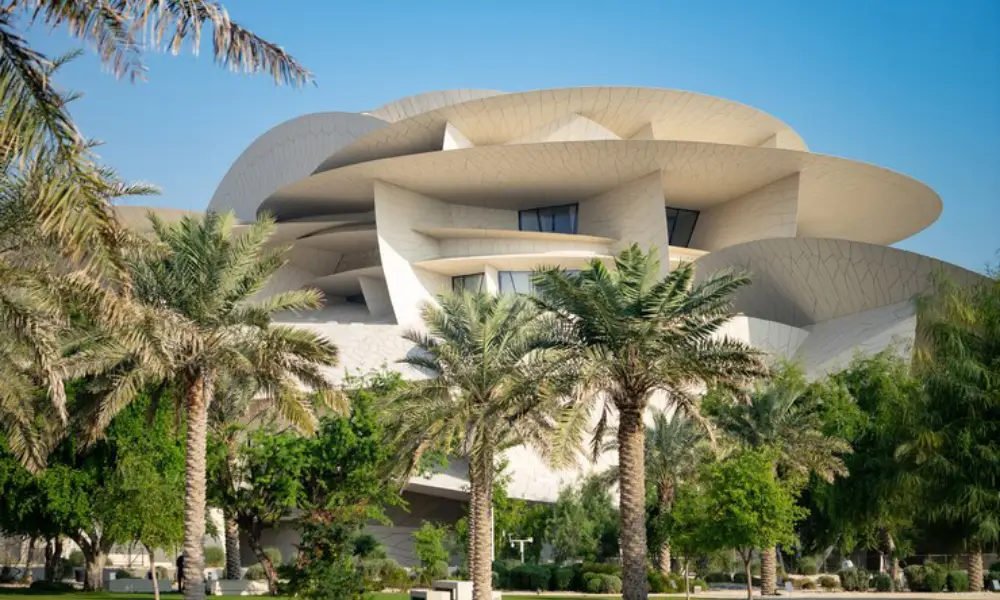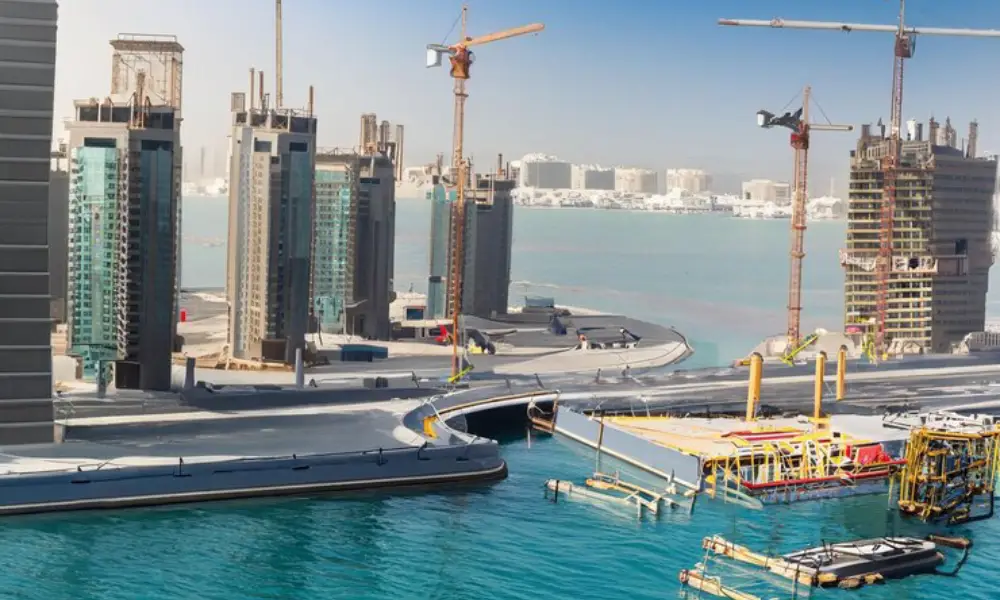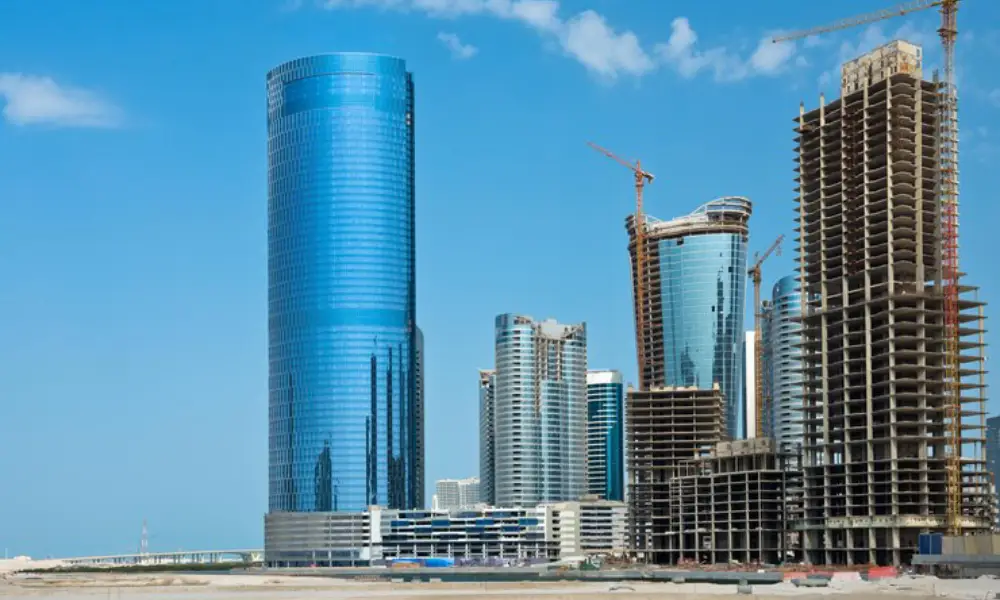
The Future of Architecture in Qatar
1. The Future Outlook of Architecture in Qatar in the Coming Decades
In recent years, Qatar has become one of the most dynamic and innovative architectural hubs in the Middle East. From the modern towers of Doha to cultural and recreational projects on the Pearl Island, the country is rapidly redefining its urban landscape. The future of architecture in Qatar is based on a blend of technology, sustainability, and local identity, where tradition and modernity coexist harmoniously. Massive investments in infrastructure, tourism, and smart projects herald a new generation of architects and designers set to reshape the urban life of the Gulf region.
2. The Impact of Urban Development and Modern Infrastructure on Architecture
Urban development in Qatar is advancing in a deliberate and forward-looking manner. Smart transportation networks, high-speed metro systems, and new commercial and residential areas provide a dynamic environment for creating modern and bold architectural designs. Advanced infrastructure not only enables the execution of large-scale projects but also influences design styles and the use of space. Today, architecture in Qatar goes beyond mere visual appeal; it forms part of a comprehensive urban system that prioritizes efficiency, sustainability, and human experience. This harmony between urban development and architecture shapes a cohesive and inspiring future for Qatar’s cityscape.
3. Innovation in the Design of Towers and Skyscrapers
Qatar is on the path to becoming one of the world’s leading architectural hubs, with a special focus on the design of unique towers and skyscrapers. The country leverages top international architects and advanced technologies to create buildings that are not only visually striking but also smart and sustainable. The towers in Qatar draw inspiration from the soft lines of the desert, the waves of the Gulf, and traditional Arabic patterns, presenting an artistic fusion of culture and technology. These innovations make each building a symbol of boldness, creativity, and forward-thinking in modern Middle Eastern architecture.

4. Sustainable Architecture and the Use of Green Technologies
In the coming decades, Qatar is set to be recognized as one of the regional leaders in sustainable architecture. Global warming and the country’s specific climatic conditions drive architects toward smart solutions that reduce energy consumption and conserve natural resources. The use of solar energy, water recycling systems, shaded designs, and natural ventilation are among the green technologies applied in new projects. The goal is to build cities that are not only beautiful and modern but also environmentally friendly. This green approach shapes a new vision of contemporary architecture in Qatar, combining economic growth with environmental responsibility.
5. The Role of Qatari Culture and Heritage in Shaping Future Architecture
Qatar’s cultural identity plays a fundamental role in guiding the future of its architecture. Despite waves of modernization, Qatari architects strive to reimagine the spirit of local culture in a contemporary form. From traditional geometric patterns to the use of local materials and inspiration from Bedouin architecture, each project reflects a link between past and future. Projects such as the National Museum of Qatar or the Katara Cultural Village exemplify this artistic fusion, showing how historical heritage can be integrated with modern design. In the future, this cultural approach will not only preserve the authenticity of Qatari architecture but also make it an inspiring model for other countries in the region.
6. Designing Public Spaces and Human Interaction with the Urban Environment
Future architecture in Qatar places significant emphasis on designing public spaces and enhancing urban life quality. Parks, walkways, squares, and cultural areas are planned to create dynamic interactions between people, nature, and the city. The goal is to establish environments that go beyond physical function, fostering a sense of belonging, comfort, and social engagement among residents. Architects utilize smart technologies, targeted lighting, and climate-conscious designs to create spaces usable and enjoyable throughout the day. This human-centered approach transforms the appearance of Doha and other Qatari cities from merely modern to vibrant, dynamic, and livable urban environments.

7. Recreational and Tourism Architecture: Hotels, Shopping Centers, and Cultural Spaces
Qatar is making substantial investments to become a global tourism destination, focusing on recreational and tourism architecture. Luxury hotels with unique designs, shopping centers inspired by Arab culture, and modern cultural spaces present a fresh face of Qatari hospitality. These projects are not merely places for accommodation or shopping but provide a complete experience of art, culture, and technology for visitors. The use of local materials, natural lighting, and interiors inspired by tradition ensures that each space tells a story of authenticity and innovation. The future of tourism in Qatar relies on architecture that combines visual beauty with unforgettable experiences for every visitor.
8. Smart Buildings and Smart Cities
Qatar is rapidly moving toward smart cities, where technology and architecture merge to create a new urban living experience. Future buildings will be equipped with sensors, energy management systems, and data networks to optimize resource use and enhance resident comfort. From automatic temperature control to smart lighting and security management, everything is designed to improve convenience and sustainability. Projects like “Lusail City” exemplify this approach, demonstrating how architecture becomes part of a dynamic digital ecosystem that makes urban life intelligent, safe, and efficient.
9. Integrating Tradition and Modernity in Architectural Projects
One of the most distinctive features of contemporary architecture in Qatar is its ability to create a beautiful balance between tradition and modernity. Architects strive to preserve cultural identity while meeting the demands of the modern era. This includes the use of arches, geometric decorations, and patterns inspired by Islamic architecture alongside minimalist lines and modern materials, resulting in a unique and visually striking combination. This blend gives buildings a dual identity: familiar and authentic, yet modern and global. Through this approach, Qatar demonstrates that being modern does not mean disconnecting from one’s roots, but rather drawing inspiration from heritage to create a new language in contemporary architecture.

10. The Impact of Global Events like the FIFA World Cup on Architecture in Qatar
Hosting the 2022 FIFA World Cup marked a turning point in Qatar’s architectural and urban development. The event not only led to the creation of massive infrastructure, including advanced stadiums, airports, and metro lines, but also introduced a new vision for urban design on a global scale. Stadiums were designed with adaptable functions, inspired by local culture, and with attention to environmental sustainability, setting new standards for sports architecture. The impact of this event continues to shape Qatar’s architectural trajectory toward multifunctional, cultural, and smart projects. In fact, the World Cup was not merely a sporting event but a platform to showcase Qatar’s bold and forward-looking architectural identity to the world.
11. Use of Modern Materials and Advanced Construction Technologies
Future architecture in Qatar heavily relies on innovation in materials and construction technologies. From advanced concrete and smart glass to recycled materials and 3D printing techniques, every project is designed to enhance efficiency, aesthetics, and sustainability. These materials and technologies enable the creation of towering, complex, and artistic structures that were previously unimaginable. Additionally, attention to durability in Qatar’s harsh climatic conditions ensures that each project combines art, science, and technology. This trend demonstrates that architecture in Qatar not only values visual appeal but also seeks to provide smart and resilient solutions for the cities of the future.
12. Predicting Future Trends and Challenges in Architecture in Qatar
Architecture in Qatar faces a future filled with both opportunities and challenges. On one hand, rapid urban growth, significant investments, and access to advanced technologies create fertile ground for innovative and striking projects. On the other hand, climatic pressures, limited natural resources, and the need to adapt to the environment push architects to develop creative and sustainable solutions. It is expected that in the coming decades, architecture in Qatar will increasingly move toward smart design, the use of renewable energy, and the integration of cultural identity with global innovations. Managing this balance between rapid growth and sustainability will be key to shaping the urban landscape of the future.

13. The Vision and Opportunities of Architecture in Qatar
Architecture in Qatar stands on the threshold of a major transformation that combines innovation, sustainability, and cultural identity. With massive investments in infrastructure, tourism projects, smart cities, and advanced buildings, the country has become a model for modern architecture in the Middle East. Future opportunities include sustainable development, human-centered design, and the integration of tradition with modernity, enhancing not only visual beauty but also the quality of urban life. Ultimately, the future of architecture in Qatar reflects boldness, creativity, and long-term vision, transforming the urban landscape into a global symbol of innovation and authenticity.

